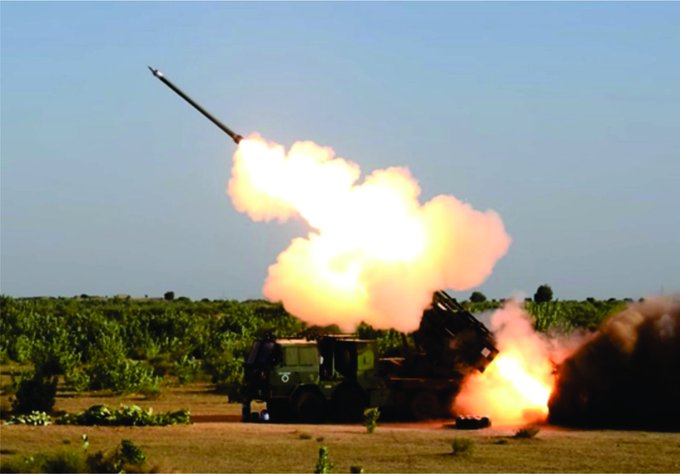 The Defence Research and Development Organisation (DRDO) announced the successful completion of flight tests for the indigenous guided Pinaka weapon system. The system, which first gained recognition during the Kargil War in 1999, has since evolved from a developmental stage to a major fire support tool for the Indian Army.
The Defence Research and Development Organisation (DRDO) announced the successful completion of flight tests for the indigenous guided Pinaka weapon system. The system, which first gained recognition during the Kargil War in 1999, has since evolved from a developmental stage to a major fire support tool for the Indian Army.
Initially used to devastate Pakistani infiltrators, the Pinaka multiple-barrel rocket launcher (MBRL) replaced the Soviet-era GRAD BM-21. Today, a Pinaka MBRL unit consists of 18 launchers, each equipped with 12 tubes. This setup can unleash seven tonnes of explosives in 44 seconds, targeting enemies up to 60 kilometers away. Its rapid deployment makes it highly effective for surprise strikes.
The Pinaka project has seen contributions from DRDO’s Armament Research & Development Establishment (ARDE) and High Energy Materials Research Laboratory (HEMRL), in collaboration with private firms L&T and Tata Power.
The first Pinaka Mark I, mounted on a rugged Tatra vehicle, had a range of 37.5 km. However, following Army feedback, the Enhanced Pinaka, launched in 2016, achieved a 75 km range with precision targeting within 10 meters. This advancement allows the Army to strike enemy bases, camps, and logistics hubs without cross-border operations.
The Pinaka system’s success has led to multiple orders, with 10 regiments set to equip the Army, including Pinaka-ER rockets currently in testing. The Indian Ministry of Defence signed a significant contract for 12 more units of the Pinaka Mark II, with an investment of approximately $2.87 billion for 22 regiments in total.
The development of the Pinaka system involved numerous DRDO labs and various Indian industries, with minimal foreign expertise. The transfer of technology for rocket manufacturing to Economic Explosives in Nagpur marks the next phase in the system’s evolution.












